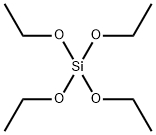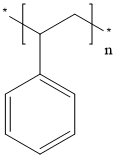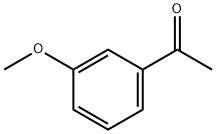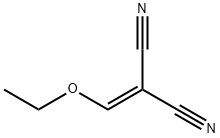Poly(3,4-ethylenedioxythiophene)-poly(styrenesulfonate)
Synonym(s):1% Pedot/PSS;Orgacon DRY;Orgacon DRY5;PEDOT:PSS;Poly(2,3-dihydrothieno-1,4-dioxin)-poly(styrenesulfonate)
- CAS NO.:155090-83-8
- Empirical Formula: (C8H8O3S)x?x(C6H6O2S)x
- Molecular Weight: 0
- MDL number: MFCD02100138
- EINECS: 629-200-1
- Update Date: 2024-11-06 15:28:16

What is Poly(3,4-ethylenedioxythiophene)-poly(styrenesulfonate)?
Description
AI 4083, PH 1000, HTL Solar and HTL Solar 3 for thin-film electronic fabrication
What are the applications of Application
PEDOT:PSS is the subject of a considerable amount of research, and is used for a range of applications within thin-film electronic fabrication. This include perovskite photovoltaics, organic photovoltaics, organic light emitting diodes, transparent conductors, organic electrochemical transistors, flexible electronics, thermoelectric generators, supercapitors, and energy storage
Chemical properties
Dark blue liquid
The Uses of Poly(3,4-ethylenedioxythiophene)-poly(styrenesulfonate)
PEDOT:PSS can be used as an electrode material that forms a layered structure with a high mobility for charge carriers. It can be used for a wide range of energy based applications, such as organic photovoltaics (OPVs), dye sensitized solar cells (DSSCs), organic light emitting diodes (OLEDs) and supercapacitors.
The Uses of Poly(3,4-ethylenedioxythiophene)-poly(styrenesulfonate)
Screen Printing results on Autotype Autosta CT7 P77/55 screen with 300 mm/s
Curing temp. 130°C during 3 min
The Uses of Poly(3,4-ethylenedioxythiophene)-poly(styrenesulfonate)
Conductive ink based on the high conductivity grade PEDOT:PSS polymer dispersion. Suitable for deposition and patterning of transparent conductive films using slot die coating and spin coating in OPV application.
General Description
A conducting polymer such as poly(3,4-ethylenedioxythiophene) doped with poly(styrene sulfonate) anions (PEDOT/PSS) is widely used in various organic optoelectronic devices. PEDOT: PSS is a blend of cationic polythiopene derivative, doped with a polyanion. High electrical conductivity and good oxidation resistance of such polymers make it suitable for electromagnetic shielding and noise suppression. Thus, the polymer film was found to possess high transparency throughout the visible light spectrum and even into near IR and near UV regions, virtually 100% absorption from 900-2,000 nm. No absorption maximum from 400-800 nm. Impact of small electric and magnetic fields on the polymer was studied.
References
[1] Kurushima Y, et al. Effect of PEDOT:PSS composition on photovoltaic performance of PEDOT:PSS/n-Si hybrid solar cells. Japanese Journal of Applied Physics, 2021; 60: 091001.
[2] Fan Z, et al. Thermoelectric Properties of PEDOT:PSS. Advanced Electronic Materials, 2019; 5: 1800769.
[3] Volkov A, et al. Understanding the Capacitance of PEDOT:PSS. Advanced Functional Materials, 2017; 27: 1700329.
Properties of Poly(3,4-ethylenedioxythiophene)-poly(styrenesulfonate)
| Melting point: | >300 °C |
| Density | 1.011 g/cm3 (dried coatings) |
| Flash point: | 100 °C |
| storage temp. | 20-25°C |
| solubility | : 1.3-1.7% Solidssoluble |
| CAS DataBase Reference | 155090-83-8(CAS DataBase Reference) |
| EPA Substance Registry System | Benzenesulfonic acid, ethenyl-, homopolymer, compd. with 2,3-dihydrothieno[3,4-b]-1,4-dioxin homopolymer (155090-83-8) |
Safety information for Poly(3,4-ethylenedioxythiophene)-poly(styrenesulfonate)
Computed Descriptors for Poly(3,4-ethylenedioxythiophene)-poly(styrenesulfonate)
New Products
4-(Dimethylamino)tetrahydro-2H-pyran-4-carbonitrile 4-AMINO-TETRAHYDRO-PYRAN-4-CARBOXYLIC ACID 4-Aminotetrahydropyran-4-carbonitrile Hydrochloride (R)-3-Aminobutanenitrile Hydrochloride 4-AMINO-TETRAHYDRO-PYRAN-4-CARBOXYLIC ACID HCL 3-((Dimethylamino)methyl)-5-methylhexan-2-one oxalate 5-Bromo-2-nitropyridine Nimesulide BP Aceclofenac IP/BP/EP Diclofenac Sodium IP/BP/EP/USP Mefenamic Acid IP/BP/EP/USP Ornidazole IP Diclofenac Potassium SODIUM AAS SOLUTION ZINC AAS SOLUTION BUFFER SOLUTION PH 10.0(BORATE) GOOCH CRUCIBLE SINTERED AQUANIL 5 BERYLLIUM AAS SOLUTION Methylcobalamin (vitamin B12) SODIUM METHYL PARABEN SODIUM VALPROATE AMOXICILLIN (AMOXYCILLIN) TRIHYDRATE ACICLOVIRRelated products of tetrahydrofuran








You may like
-
 Poly(3,4-ethylenedioxythiophene)-poly(styrenesulfonate) CASView Details
Poly(3,4-ethylenedioxythiophene)-poly(styrenesulfonate) CASView Details -
 Poly(3,4-ethylenedioxythiophene)-poly(styrenesulfonate) CASView Details
Poly(3,4-ethylenedioxythiophene)-poly(styrenesulfonate) CASView Details -
 Poly(3,4-ethylenedioxythiophene)-poly(styrenesulfonate) CASView Details
Poly(3,4-ethylenedioxythiophene)-poly(styrenesulfonate) CASView Details -
 Poly(3,4-ethylenedioxythiophene)-poly(styrenesulfonate) CASView Details
Poly(3,4-ethylenedioxythiophene)-poly(styrenesulfonate) CASView Details -
 Poly(3,4-ethylenedioxythiophene)-poly(styrenesulfonate) CASView Details
Poly(3,4-ethylenedioxythiophene)-poly(styrenesulfonate) CASView Details -
 Poly(3,4-ethylenedioxythiophene)-poly(styrenesulfonate) CASView Details
Poly(3,4-ethylenedioxythiophene)-poly(styrenesulfonate) CASView Details -
 Poly(3,4-ethylenedioxythiophene)-poly(styrenesulfonate) CASView Details
Poly(3,4-ethylenedioxythiophene)-poly(styrenesulfonate) CASView Details -
 Poly(3,4-ethylenedioxythiophene)-poly(styrenesulfonate) CASView Details
Poly(3,4-ethylenedioxythiophene)-poly(styrenesulfonate) CASView Details